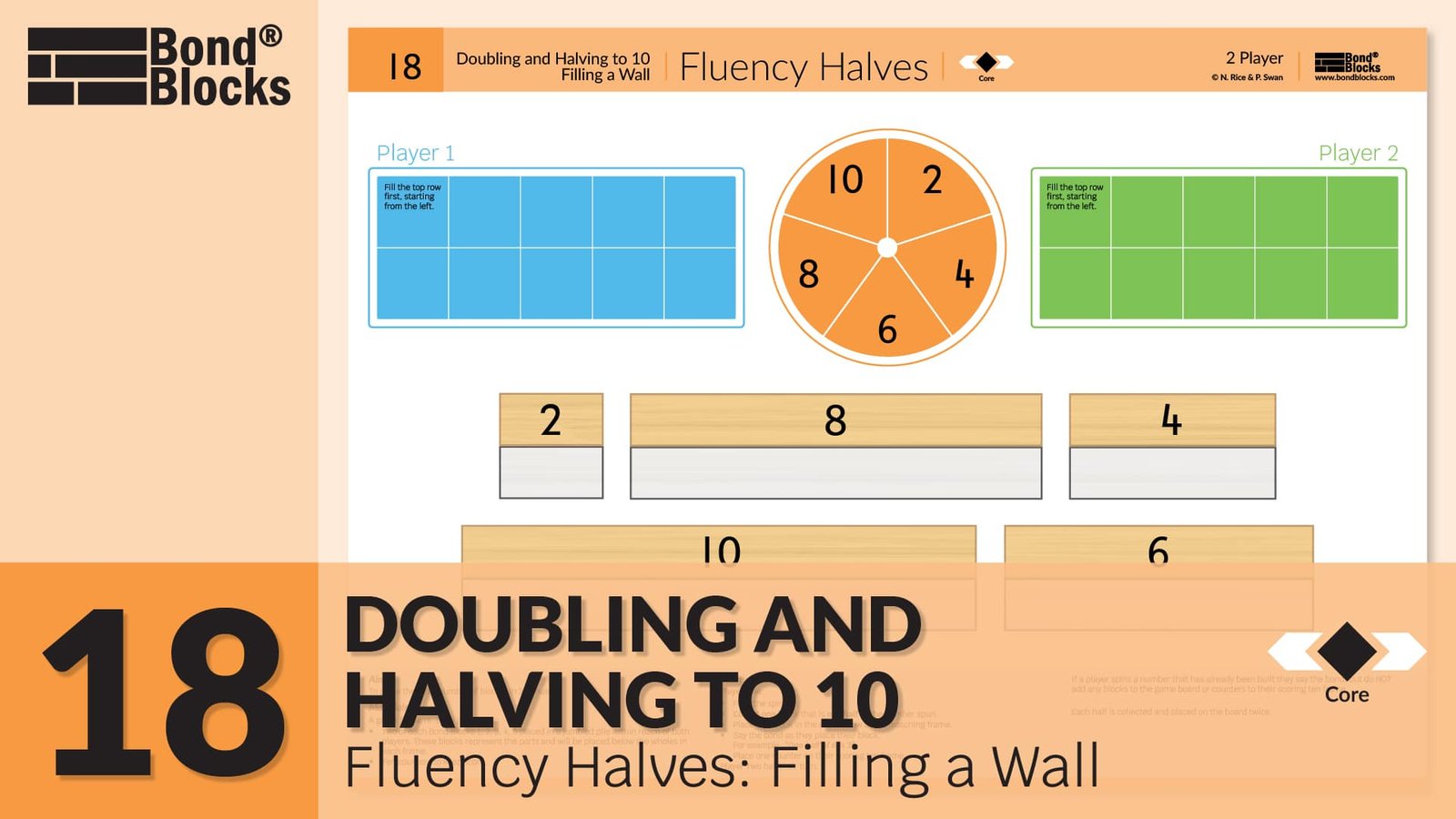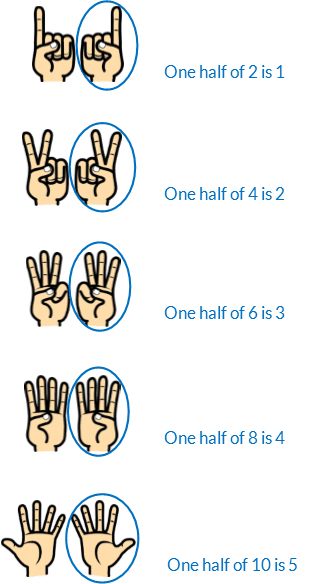18) Fluency Halves
Doubling and Halving to 10: Filling a Wall

Mathematics
Develop fluency with one half of the wholes 2, 4, 6, 8, 10.

Language
- one half of
- equals as “is”
- double bond: a two-part bond, where both parts are the same


Differentiation
A little easier
Working Memory Support: subitised fingers
Support recall by using fingers to develop fluency representing one-half of a double bond with fingers. It is essential students make the finger patterns in a subtised way, not by putting up individual fingers one at a time.
Click this link to read Teacher Notes for more information about using counters and fingers to support learning number bonds.


Working Memory Support: desk visual
Click to download the Double Bonds to 10 Part-Part-Whole Diagrams desk visual.

These part-part-whole diagrams can be stuck to the top of student’s desk, as a desk visual, until students are fluent recalling these facts. Students with memory or processing difficulties can benefit from having visuals as permanent prompts.
Click this link to read Teacher Notes for more ideas about “Using Part-Part-Whole Desk Visuals” to support students.
A little harder
Activity 59
Students who have completed up to Ten Plus Bonds: Addition and Subtraction Ten and One can complete a similar activity for wholes in the teens. Complete Activity 59 Doubling and Halving to 20: Fluency Halves Filling a Wall.
Progression
In the next activity students build on double bonds using the addition strategy of near doubles. Go to
Activity 19
Doubling and Halving to 10: Near Double, Strategy Concept
